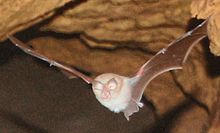
The lesser horseshoe bat is a type of small European and North African insectivorous bat, related to its larger cousin, the greater horseshoe bat. As with all horseshoe bats, the species gets its name from its distinctive horseshoe-shaped noseleaf.

The acuminate horseshoe bat is a species of bat in the family Rhinolophidae. It is found in Southeast Asia. It lives in forests and urban areas.

The Cape horseshoe bat is a species of bat in the family Rhinolophidae. It is endemic to South Africa, and is potentially threatened by habitat loss and disturbance of its roosting sites, although it is present in large enough numbers to be considered of least concern by the IUCN.
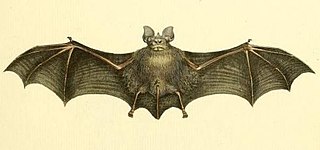
Geoffroy's horseshoe bat is a species of bat in the family Rhinolophidae found in Africa. Its natural habitats are subtropical or tropical moist lowland forest, Mediterranean-type shrubby vegetation, caves and other subterranean habitats, and hot deserts.

The Andaman horseshoe bat is a species of bat in the family Rhinolophidae. It is endemic to the Andaman Islands. During the day, it roosts in caves, but may also choose tree hollows.

Dent's horseshoe bat is a species of bat in the family Rhinolophidae. It is found in Angola, Botswana, Ghana, Guinea, Guinea-Bissau, Namibia, South Africa, and Zimbabwe. The bat's natural habitats are dry savannah country and it roosts in caves and other subterranean habitats.
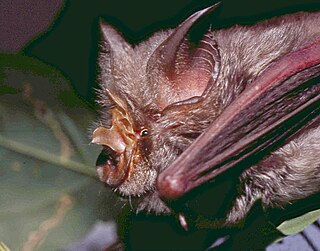
Rüppell's horseshoe bat is a species of bat in the family Rhinolophidae found in Africa. Its natural habitats are subtropical or tropical dry forests, savanna, caves and other subterranean habitats. This species is quite common in parts of its range, and no specific threats have been recognised, so the International Union for Conservation of Nature has rated its conservation status as being of "least concern".
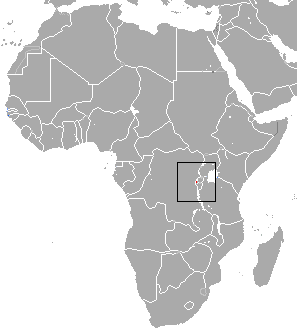
Rhinolophus hilli, Hill's horseshoe bat, is a species of bat in the family Rhinolophidae. It is endemic to Rwanda. Its natural habitats are subtropical or tropical moist montane forests, caves, and subterranean habitats. In 2013, Bat Conservation International listed this species as one of the 35 species of its worldwide priority list of conservation. It is threatened by habitat loss.
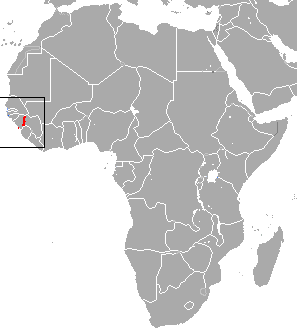
Maclaud's horseshoe bat is a species of bat in the family Rhinolophidae. It is endemic to Guinea. Its natural habitats are moist savanna, caves and other subterranean habitats. It is one of five African microbat species to be listed as endangered by the IUCN. In 2013, Bat Conservation International listed this species as one of the 35 species of its worldwide priority list of conservation. It is threatened by habitat loss.

The smaller horseshoe bat is a species of bat in the family Rhinolophidae. It is found in Australia and Papua New Guinea.

Mehely's horseshoe bat is a species of insectivorous bat in the family Rhinolophidae found in Southern Europe and parts of the Middle East. It is distributed in a narrow band around the Mediterranean Sea from North-Western Africa across Portugal, Spain, the Balearics, southern France, Sardinia, Sicily and the Balkan Peninsula to Asia Minor.
